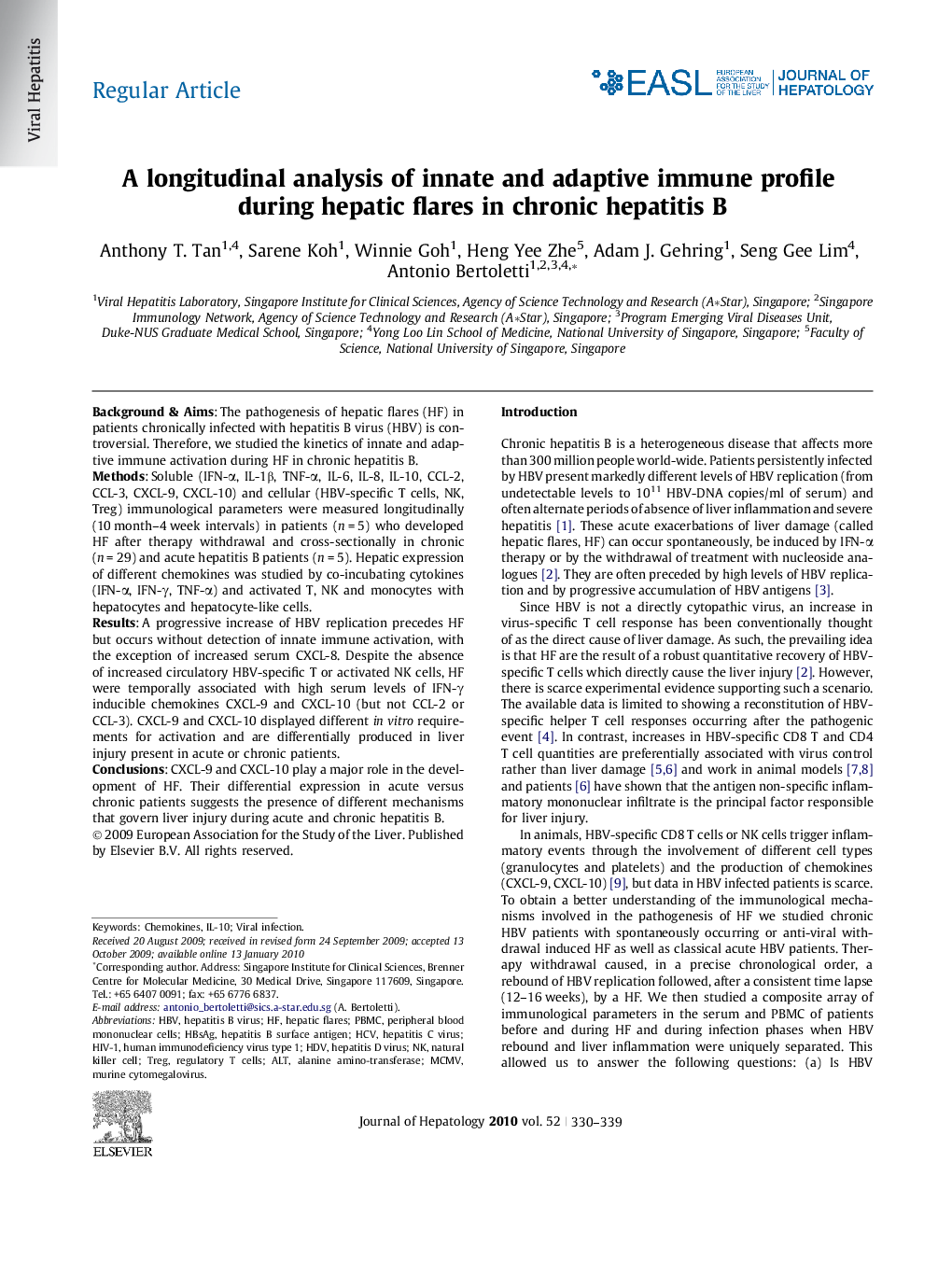| Article ID | Journal | Published Year | Pages | File Type |
|---|---|---|---|---|
| 6109536 | Journal of Hepatology | 2010 | 10 Pages |
Background & AimsThe pathogenesis of hepatic flares (HF) in patients chronically infected with hepatitis B virus (HBV) is controversial. Therefore, we studied the kinetics of innate and adaptive immune activation during HF in chronic hepatitis B.MethodsSoluble (IFN-α, IL-1β, TNF-α, IL-6, IL-8, IL-10, CCL-2, CCL-3, CXCL-9, CXCL-10) and cellular (HBV-specific T cells, NK, Treg) immunological parameters were measured longitudinally (10 month-4 week intervals) in patients (n = 5) who developed HF after therapy withdrawal and cross-sectionally in chronic (n = 29) and acute hepatitis B patients (n = 5). Hepatic expression of different chemokines was studied by co-incubating cytokines (IFN-α, IFN-γ, TNF-α) and activated T, NK and monocytes with hepatocytes and hepatocyte-like cells.ResultsA progressive increase of HBV replication precedes HF but occurs without detection of innate immune activation, with the exception of increased serum CXCL-8. Despite the absence of increased circulatory HBV-specific T or activated NK cells, HF were temporally associated with high serum levels of IFN-γ inducible chemokines CXCL-9 and CXCL-10 (but not CCL-2 or CCL-3). CXCL-9 and CXCL-10 displayed different in vitro requirements for activation and are differentially produced in liver injury present in acute or chronic patients.ConclusionsCXCL-9 and CXCL-10 play a major role in the development of HF. Their differential expression in acute versus chronic patients suggests the presence of different mechanisms that govern liver injury during acute and chronic hepatitis B.
